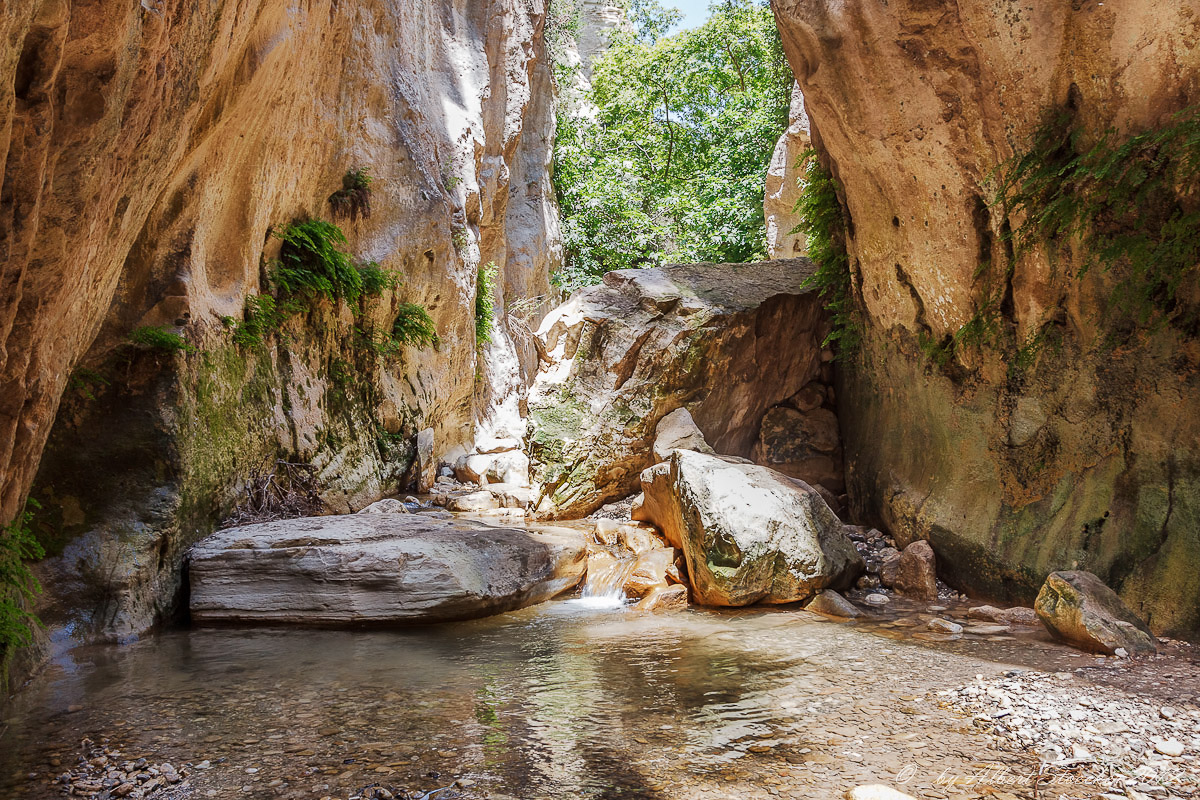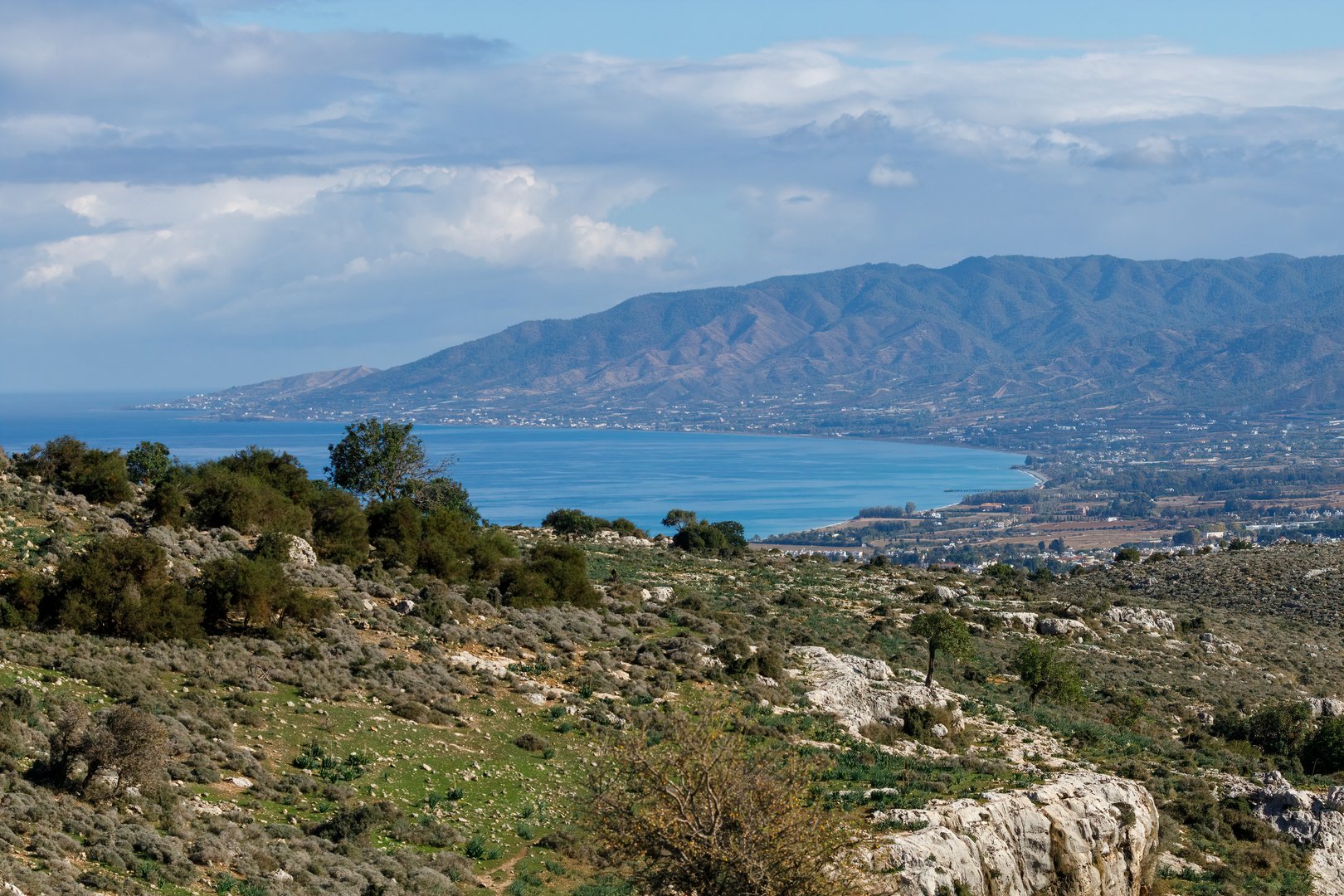Far too much concrete: The misguided plans are not just a huge nature conservation failure, but a monumental failure of common sense
By Martin Hellicar
By the time you read this, the future of Akamas will more-than-likely have been set, with the approval of plans that pave the way for far too much concrete for this beautiful corner of our island.
It is scant consolation that these government plans – poised to secure final approval as I write this – are not as bad as they might have been. In fact, this is largely irrelevant. History will not remember that the development zones coloured in on Akamas maps by planners were once much bigger, before pressure and protests from environmentalists pegged them back a bit. Nor should it. What counts is what Akamas was before these plans – what it is today – and what it will end up being. (The comparison is even more painful when one considers what Akamas could be, given wise management).
These misguided plans are more about construction (plus the enormous holes in the ground needed to secure construction materials) than about establishing ‘protection allied with carefully managed development’, which is what we desperately need in order to keep Akamas special. BirdLife Cyprus and other local NGOs have fought long and hard to protect Akamas from development. And this fight will go on; but we have to face up to the size of the blow for Akamas as a wild place, and for the Akamas that might have been, that the about-to-be-approved Local Plan represents.
This Local Plan – the term used for a planning zonation map – affects about half of the Akamas peninsula. It leaves untouched only the (inexcusably small) portion of the peninsula that enjoys protected status as a designated Natura 2000 site. This designation essentially covers only the state forest area, though this does, fortunately, cover most of the Akamas coastline. The rest – the Akamas hinterland and the stunning open landscapes of the Laona area, which are of equal or even greater value for wildlife – is left to the “tender mercies” of our planning department. For if there is a true villain of the piece, it is government planning procedures, aka the ‘chariot of concrete’.
All state departments involved must take their share of the blame for this looming nature protection failure, but one stands out. The Town Planning Department for its failure – a failure both singular and determined – to grasp the importance of protecting Akamas. The Game and Fauna Service also stands apart and alone, but for very different reasons. The GFS has done its best to save Akamas, even in the face of intense pro-development pressure from ‘on high’.
Again, like the ‘what plans went before’ aspect, this ‘who did what’ facet of the sorry tale is perhaps unimportant detail, certainly in the long-run. What matters is the end result, on the ground. But if the Akamas story is not to be repeated, some things need to be brought out into the open and looked at, hard.
I’ll come right back to that, but first to outline what lies in wait for much of Akamas. First, what little good news there is: there is to be no isolated housing policy – the planning malaise that blights most of our island – for Akamas. This should never have been on the table, of course, but at least it seems to be off it now. Some very necessary restrictions have been put in place for so-called ‘visitor farmstead’ developments and new building zones have been limited in some areas, notably around Kathikas.

The government wants to stimulate development in new zones where old ones have ‘failed’, like the role of the state is to actively promote development, not manage it – even in areas like Akamas (BirdLife Cyprus, Albert Stoecker)
But then there are the massed ranks of bad planning ideas, about to leap off the map and take ugly shape. Expansion of the Androlikou quarrying zone, threatening caves that are home to increasingly rare fruit bats and a habitat that supports perhaps the greatest density of nesting Rollers – gorgeous, precious summer visitor birds from Africa – found anywhere on our planet. This expansion is about to be approved despite there being plenty (as in hundreds of thousands of tons) of rock left in the area’s existing quarries, and when alternatives exist, in the form of quarrying in less precious sites than Akamas and in choosing alternative materials. There are ‘Specialised Development’ zones – those thinly veiled excuses for more villas. The environmental assessment recognises these as impacting on Akamas wildlife, but then only proposes they be reduced or moved about in the final plans. Plus there are new tourism zones, including on an untouched hillside near Ineia and on the coast towards the Baths of Aphrodite.
It all simply adds up to too much. Too much habitat loss for Rollers, Bonelli’s Eagles and Peregrine Falcons and too much impact on a hitherto largely untouched landscape, that special and increasingly rare commodity in Cyprus, so important for sustainable tourism.
There are existing development zones in the Laona area. And here is the rub, for these existing zones are currently only 17-18 per cent built up. They are essentially empty. And what does this state-of-play lead our government planners to propose for Akamas, the area of our island most universally acknowledged for its untouched landscape? It leads them to propose more development zones, not despite the emptiness of existing zones, but because of this emptiness. In the hope that, their argument goes, new zones will stimulate development where old ones have ‘failed’ to do so. For all the world like the role of the state was to actively promote development, not to manage it – even in areas like Akamas. This represents not just a huge nature conservation failure, but a monumental failure of common sense.

The fight will go on; but we have to face up to the size of the blow for Akamas as a wild place that the Local Plan represents (BirdLife Cyprus, Albert Stoecker)
So the prospects for Akamas being protected and managed along sustainable lines – with limited development around existing villages – diminish. Opportunities for eco-tourism, which are surely greater on Akamas than anywhere else in Cyprus, evaporate. And with them goes the biggest opportunity for sustainable support of local communities.
This spring past, I took my nine-year-old niece and my two seven-year-old nephews to see Akamas. I wanted them to have an experience and picture of ‘Akamas now’, which is pretty much as it was when I got to know it. There is a phenomenon named ‘shifting baseline’ that leads to us all (largely unconsciously) assuming that a place is ‘right’ or ‘as it should be’ in the form we first get to know it in. The idea of my niece and nephews accepting an ‘Akamas light’ instead of Akamas as it should be, with its exceptional wildlife, habitats and landscapes preserved and carefully managed, was honestly too much to bear. (They loved it, by the way, as I knew they would).
One of the tragedies of biodiversity loss – of our ongoing assault on nature – is that we are handing on a much impoverished planet to the next generation. The Akamas failure taking shape now is very much part of that tragedy, which is why, despite what is shaping into a serious planning blow, we cannot ever stop battling to save Akamas.
Martin Hellicar works as director of local nature conservation NGO BirdLife Cyprus. A PhD ecologist and former journalist, he is fortunate enough to work for an organisation whose positions closely match his, though the opinions expressed here are entirely his own







Click here to change your cookie preferences